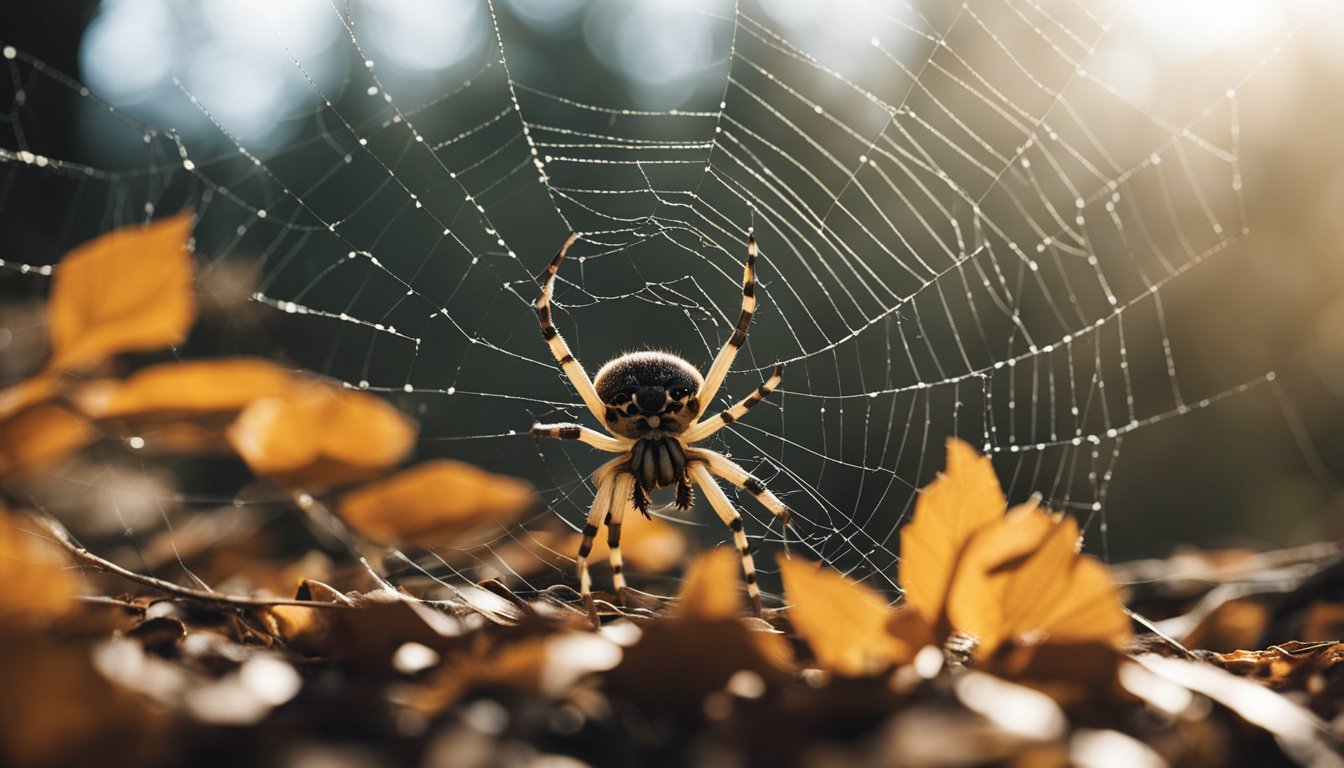How Long Do Spiders Live: Lifespan Insights and Factors

Have you ever wondered how long spiders actually live? Whether you’re fascinated by these creatures or slightly terrified, understanding their lifespan can be intriguing. Some spiders live just a few months, while others can survive for over 40 years depending on the species. This range makes them one of the most diverse groups in the animal kingdom.
For example, trapdoor spiders can live between 5 and 20 years, with some reaching an impressive 43 years. This fascinating variation in lifespan often depends on factors like species and gender. Different spiders also have unique ways of surviving without food for long periods, adding another layer to their mysterious existence.
Key Takeaways
- Spiders’ lifespans vary widely from months to decades.
- Species and gender influence how long spiders live.
- Understanding spiders can help us manage encounters at home.
Spider Lifespan Fundamentals

Spiders have fascinating lifespans that vary widely depending on factors like species and environment. Let’s explore what influences spider longevity and compare the typical lifespans of several common spider species.
Factors Influencing Spider Longevity
Many elements affect how long spiders live. Diet and access to food play crucial roles. Spiders with plenty of prey typically have better odds of surviving longer. Environmental conditions like temperature and humidity can also impact their lifespan. For instance, spiders that live indoors away from predators often live longer.
Mating and reproduction can shorten the lifespan of some spiders, particularly males. Once they mate, some spider species tend to decline or die soon after. Predation is another significant factor. Spiders, particularly their eggs and young, become prey for a variety of animals.
Typical Lifespans Across Common Species
The lifespan of spiders is remarkably diverse. For example, the common house spider usually lives about a year. However, some species like the barn funnel weaver can live up to 7 years.
Tarantulas often have some of the longest lifespans among spiders. Females can live for decades, with some species reaching 30 years or more. In contrast, jumping spiders typically have shorter lifespans, often only a couple of years. Understanding these differences helps us appreciate the diversity in spider life expectancy.
Survival Without Food
Spiders possess remarkable abilities to survive without food for extended periods. Let’s examine how their natural resilience and unique feeding behaviors contribute to this ability.
Starvation Resistance in Spiders
Spiders can go without food for significant lengths of time due to their slow metabolism. On average, they can survive between 1 to 2 months without eating. Certain species, like the brown recluse, can endure up to 1-2 years in scarce conditions.
This is because larger spiders tend to last longer without meals compared to smaller ones. Larger species like tarantulas can endure a lack of food longer than house spiders. Each spider varies greatly depending on species and environmental pressures, showcasing their adaptability and endurance.
Adaptation and Feeding Patterns
Spiders have evolved various adaptations to cope with uncertain food supplies. Their carnivorous diet supports survival as they can regulate their metabolism based on the environment. Their opportunistic feeding habits allow them to consume food when available and store it in their stomachs for later use.
Some spiders have interesting techniques, such as caching their food, which means they save and store surplus prey for times of scarcity. Pet spiders often survive longer than wild ones due to more stable living conditions. By understanding these feeding patterns and adaptations, we can appreciate the incredible survival skills of spiders when faced with food shortages.
Dealing With Spiders in the Home
Spiders are common in homes, but we can manage them effectively by focusing on what brings them in and how to safely remove them. We will explain ways to stop spiders from entering and how to safely get them out if they do come in.
Identification and Prevention
First, let’s identify the spiders we might see in our homes. Common house spiders often have small bodies and long legs. The brown recluse and black widow are important to recognize due to their venom.
Prevention starts with reducing clutter, which provides hiding spots. We should seal cracks and gaps around doors and windows because these are entry points for spiders. Using caulk to fill large openings will help keep them out.
Insects serve as food for spiders, so keeping other pests under control is vital. Regular cleaning, vacuuming, and removing webs can also discourage spiders from settling in.
Safe Removal Techniques
When it’s time to remove a spider, we should do it humanely. Using a spider catcher, jar, or glass is an easy method. Trap the spider under a container and release it outside, far from our homes.
We might also consider using natural repellents like essential oils. Peppermint oil, for example, has been known to deter spiders. Spraying a diluted solution near doors and windows can be effective.
For those who prefer not to get close to spiders, a spider vacuum device could work. These devices allow us to capture spiders without direct contact.






